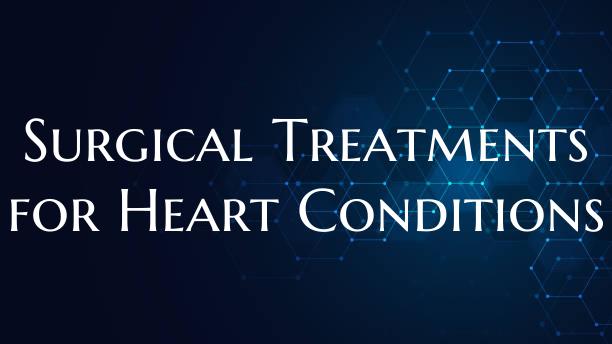
Surgical Treatments for Heart Conditions
The human heart is a vital organ responsible for pumping blood throughout the body, supplying oxygen and nutrients to cells and carrying away waste products. Heart conditions can be life-threatening and may require surgical intervention to restore proper function and improve quality of life. There are several surgical treatments available for various heart conditions, each aimed at addressing specific issues and improving overall heart health.
1. Coronary Artery Bypass Grafting (CABG): Coronary artery bypass grafting is a common surgical procedure used to treat severe coronary artery disease. In this procedure, a surgeon creates a bypass around blocked or narrowed coronary arteries using blood vessels from other parts of the body. By rerouting blood flow to the heart muscle, CABG can restore blood flow, relieve chest pain (angina), and reduce the risk of heart attack.
2. Heart Valve Repair or Replacement: Heart valve problems, such as stenosis (narrowing) or regurgitation (leaking), can be corrected through surgical repair or replacement of the affected valve. During valve repair, a surgeon may reshape the valve to improve its function, while valve replacement involves removing the damaged valve and replacing it with a mechanical or biological valve. This can help restore proper blood flow and prevent complications associated with valve dysfunction.
3. Aortic Aneurysm Repair: An aortic aneurysm is a dangerous condition characterized by a bulge in the aortic wall that can rupture if left untreated. Surgical repair of an aortic aneurysm typically involves replacing the weakened portion of the aorta with a synthetic graft to prevent rupture and restore normal blood flow. Timely intervention is crucial to prevent life-threatening complications associated with aortic aneurysms.
4. Ventricular Assist Devices (VADs): Ventricular assist devices are mechanical pumps implanted in the chest to help a weakened heart pump blood more effectively. VADs are used as a bridge to transplant for patients awaiting a heart transplant or as destination therapy for those who are not eligible for heart transplantation. These devices can improve heart function, relieve symptoms of heart failure, and prolong survival in patients with severe heart failure.
5. Cardiac Ablation: Cardiac ablation is a minimally invasive procedure used to treat abnormal heart rhythms (arrhythmias) by disrupting the electrical pathways causing irregular heartbeats. During ablation, a catheter is inserted into the heart to deliver energy (such as heat or cold) that destroys or scar tissue responsible for the arrhythmia. This procedure can restore normal heart rhythm and reduce the need for medications to control arrhythmias.
Surgical treatments for heart conditions have significantly advanced over the years, offering effective options for managing a wide range of cardiovascular disorders. While these procedures carry risks like any surgery, they can provide significant benefits in terms of improving heart function, relieving symptoms, and enhancing overall quality of life for patients with heart conditions. Consultation with a qualified cardiac surgeon is essential to determine the most appropriate surgical treatment option based on individual needs and medical history.